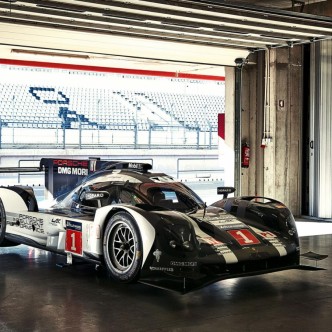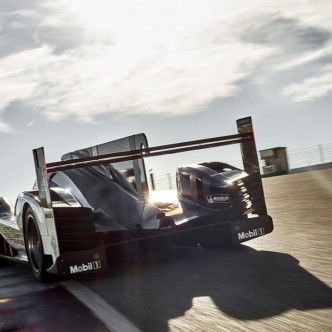World debut for the new 919 Hybrid
Strong development characterises the new 919 Hybrid’ technology. The powertrain became even more efficient, the aerodynamics were even more specific for the various race tracks and the weight of single components was even more reduced. “The over 900 hp strong Le Mans Prototype is ready for the title defence,” said Fritz Enzinger, Vice President LMP1.
Even the livery of the Porsche 919 Hybrid’s third generation represents an evolution: In its debut year, 2014, the 919 was white and sported the claim “Porsche Intelligent Performance”. The first letters of this slogan were also on the 2015 racing cars with their background colours of white, red and black. In 2016, all three colours melt together into a new design.
Also new are the car numbers: In 2015 a one-two result at the Le Mans 24-hour race was achieved. Porsche won the manufacturers’ World Championship title. Timo Bernhard (DE), Brendon Hartley (NZ) and Mark Webber (AU) became the Drivers’ World Champions and will now race with the number 1 on their car. The sister car of Romain Dumas (FR), Neel Jani (CH) and Marc Lieb (DE) will carry the number 2.
The most important features of the new 919 Hybrid at a glance
For the first time Porsche fully exploits the WEC regulations by deploying three different aerodynamic packages to make the car best suit to the respective race tracks. Three aerodynamic specifications are the maximum allowed. The weight of the four-cylinder turbo engine, as well as its fuel consumption, could be further reduced. The two energy recovery systems of the hybrid drive have been improved in terms of efficiency.
For 2016, also the components of the electric drive have become even more powerful and efficient. That applies for the optimised electric motor at the front axle, the power electronics and the new generation of lithium-ion battery cells in the in-house developed battery. A new front axle allows for more set-up options, while the intense tyre development with partner Michelin made a refined overall set-up for the new 919 Hybrid possible.
The new 919 Hybrid
For the 2016 Porsche 919, the basis of the chassis structure remains unchanged, as does the hybrid drive concept with its two-litre V4 turbocharged petrol engine and the two different energy recovery systems (braking energy from the front axle and exhaust energy). Right from the start, for the 2014 season, Porsche had this courageous and spot on concept in place. But the first car showed exceptional potential, especially in terms of weight, and is why a new car for 2015 was built. For 2016, there is less need to change and Porsche is benefitting now from stability for the concept.
The WEC regulations back the hybrid
The regulations for the LMP1 category require manufacturers to use hybrid drive systems and establish a direct link between performance and energy efficiency. This means that a large amount of energy from recovery systems may be used, but entails a proportional reduction in the permitted amount of fuel per lap. The quantity of fuel consumed in each lap is counted.
The WEC allows engineers a great degree of freedom in terms of the hybrid drive concepts. The teams can choose between diesel and petrol engines, naturally aspirated or turbocharged engines, various displacements, and one or two energy recovery systems. This formula puts the focus on innovations with high relevance for future production sports cars – and this was the main reason why Porsche decided to return to the world of top level motor racing.
V4-turbo with direct injection
The combustion efficiency and mixture preparation of the 2-litre V4 turbocharged petrol engine, driving the rear axle, was further increased in close work with the engineers from production development in Weissach. Also the 90-degree V-engine shed some more weight. Last season, the output of the combustion engine was well above 500 hp. But the 2016 regulations stipulate a lower amount of energy from fuel per lap and reduce the maximum fuel flow for prototypes.
In this way, the regulations prevent the LMP1 cars from becoming increasingly faster, yet at the same time fuel the engineers’ efforts to generate more power from increasingly less fuel. For the 919, this means around eight per cent less fuel and power. In other words: ten megajoules less energy per Le Mans lap from the fuel. That costs about four seconds for every 13.629-kilometre Le Mans lap. Through the new restrictions, the combustion engine has dropped to below 500 hp.
Read more HERE!


